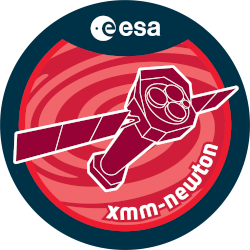

| Proposal ID | 086292 |
| Title | X-ray Spectrometry of SN1987A |
| Download Data Associated to the proposal | https://nxsa.esac.esa.int/nxsa-sl/servlet/data-action-aio?obsno=0862920201 |
| DOI | https://doi.org/10.57780/esa-5d3t6pj |
| Principal Investigator, PI | Dr Frank Haberl |
| Abstract | Between 2007 and 2017, our yearly XMM-Newton monitoring of SN1987A yielded EPICand RGS spectra of unprecedented quality. The fluxes and broadening of thenumerous emission lines provide information on the evolution of the X-rayemitting plasma and its dynamics. The soft X-ray light curve shows a mildflattening after 2006 and a flux decrease since 2014. To further monitor theevolution of the X-ray flux and to follow the expected turn-over we propose tocontinue our monitoring. This will allow us to further study the time evolutionof the shock conditions and abundance profiles. At high energies EPIC-pn canhelp to clarify the extremely low observed Fe abundance by following theevolution of the detected Fe-K line. |
| Publications |
|
| Instrument | EMOS1, EMOS2, EPN, OM, RGS1, RGS2 |
| Temporal Coverage | 2020-11-24T22:49:39Z/2020-11-25T21:16:19Z |
| Version | 18.02_20200221_1200 |
| Mission Description | The European Space Agencys (ESA) X-ray Multi-Mirror Mission (XMM-Newton) was launched by an Ariane 504 on December 10th 1999. XMM-Newton is ESAs second cornerstone of the Horizon 2000 Science Programme. It carries 3 high throughput X-ray telescopes with an unprecedented effective area, and an optical monitor, the first flown on a X-ray observatory. The large collecting area and ability to make long uninterrupted exposures provide highly sensitive observations. Since Earths atmosphere blocks out all X-rays, only a telescope in space can detect and study celestial X-ray sources. The XMM-Newton mission is helping scientists to solve a number of cosmic mysteries, ranging from the enigmatic black holes to the origins of the Universe itself. Observing time on XMM-Newton is being made available to the scientific community, applying for observational periods on a competitive basis. |
| Creator Contact | https://www.cosmos.esa.int/web/xmm-newton/xmm-newton-helpdesk |
| Date Published | 2021-12-16T00:00:00Z |
| Last Update | 2025-08-04 |
| Keywords | "XMM", "XMM-Newton", "xray emitting plasma", "abundance profiles", "numerous emission lines", "xray flux", "yearly xmm newton", "energies epic pn", "fe abundance", "time evolution", "x ray spectrometry", "EPIC", "mild flattening", "shock conditions", "flux decrease", "rgs spectra" |
| Publisher And Registrant | European Space Agency |
| Credit Guidelines | European Space Agency, Dr Frank Haberl, 2021, 'X-ray Spectrometry of SN1987A', 18.02_20200221_1200, European Space Agency, https://doi.org/10.57780/esa-5d3t6pj |